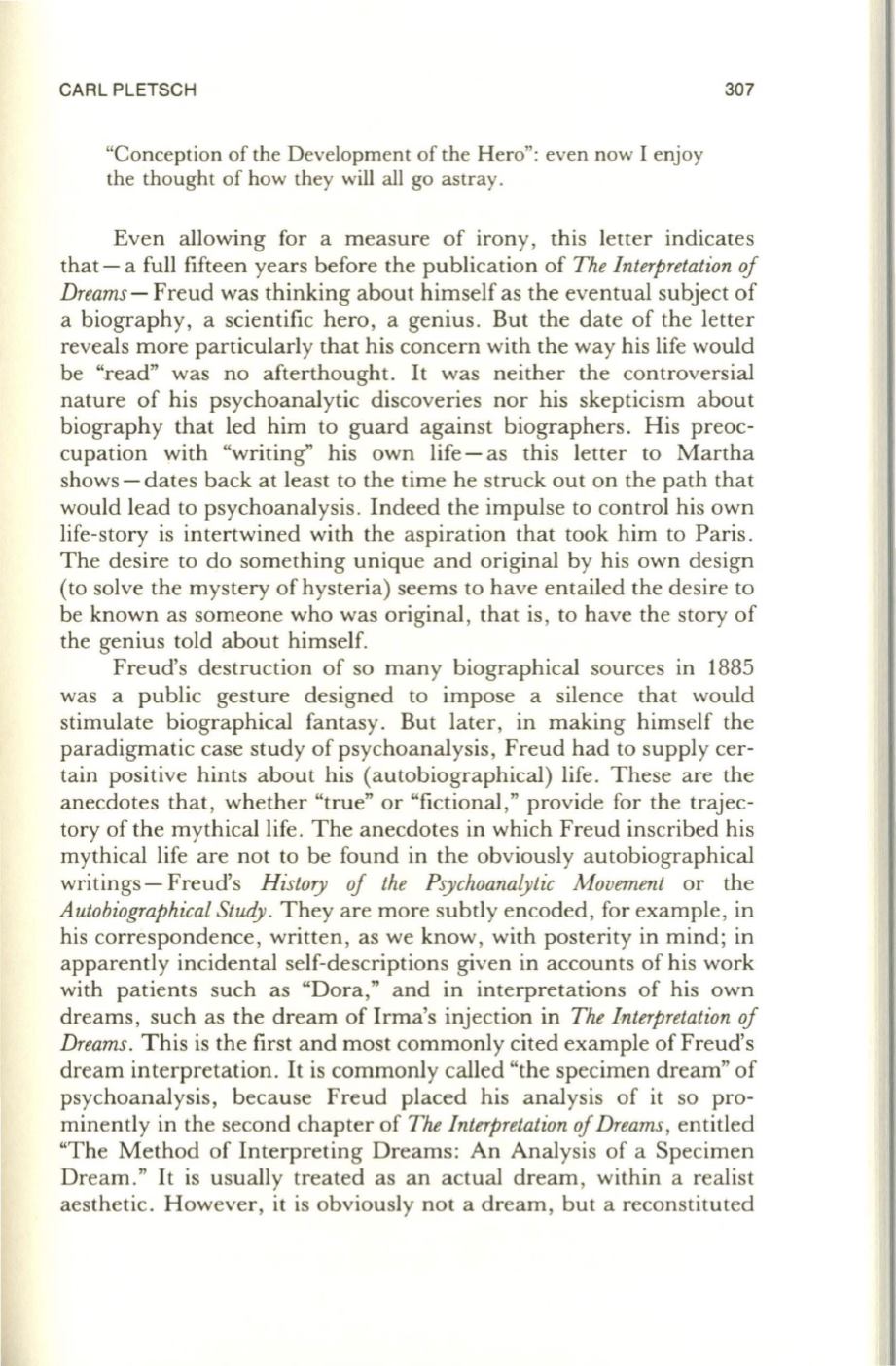
CARL PLETSCH
"Conception of the Development of the Hero": even now I enjoy
the thought of how they will all go astray.
307
Even allowing for a measure of irony, this letter indicates
that - a full fifteen years before the publication of
The Interpretation
rif
Dreams-
Freud was thinking about himself as the eventual subject of
a biography, a scientific hero, a genius. But the date of the letter
reveals more particularly that his concern with the way his life would
be "read" was no afterthought. It was neither the controversial
nature of his psychoanalytic discoveries nor his skepticism about
biography that led him to guard against biographers. His preoc–
cupation with "writing" his own life - as this letter to Martha
shows - dates back at least to the time he struck out on the path that
would lead to psychoanalysis. Indeed the impulse to control his own
life-story is intertwined with the aspiration that took him to Paris.
The desire to do something unique and original by his own design
(to solve the mystery of hysteria) seems to have entailed the desire to
be known as someone who was original, that is, to have the story of
the genius told about himself.
Freud's destruction of so many biographical sources in 1885
was a public gesture designed to impose a silence that would
stimulate biographical fantasy. But later, in making himself the
paradigmatic case study of psychoanalysis, Freud had to supply cer–
tain positive hints about his (autobiographical) life. These are the
anecdotes that, whether "true" or "fictional," provide for the trajec–
tory of the mythical life . The anecdotes in which Freud inscribed his
mythical life are not to be found in the obviously autobiographical
writings- Freud's
History oj the Psychoanalytic Movement
or the
Autobiographical Study.
They are more subtly encoded, for example, in
his correspondence, written, as we know, with posterity in mind; in
apparently incidental self-descriptions given in accounts of his work
with patients such as "Dora," and in interpretations of his own
dreams, such as the dream of Irma's injection in
The Interpretation oj
Dreams.
This is the first and most commonly cited example of Freud's
dream interpretation. It is commonly called "the specimen dream" of
psychoanalysis, because Freud placed his analysis of it so pro–
minently in the second chapter of
The Interpretation ofDreams,
entitled
"The Method of Interpreting Dreams: An Analysis of a Specimen
Dream." It is usually treated as an actual dream, within a realist
aesthetic. However, it is obviously not a dream, but a reconstituted


